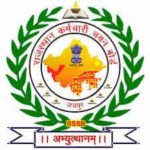Hello and welcome to ExamPundit. Here is a set of English Quiz for LIC AAO 2016.
(Directions Q. 1-10):
Read the following passage carefully and answer the questions given below it.
Read the following passage carefully and answer the questions given below it.
Thousands of people in Nepal have been killed in the
earthquake that had its epicenter in the western part of the Himalayan
republic. The quake, measuring 7.9 on the Richter scale, is one of the worst
that has hit the subcontinent. Many adjoining areas in India that stretch to as
far as Bhopal have been affected with the death toll in India mounting from
three dozen. The primary task of the governments is to bring relief to the
quake-affected people, though Nepal’s topography
makes it difficult. Nonetheless, no effort should be spared to provide relief in terms of food, clothes and
medicines.
earthquake that had its epicenter in the western part of the Himalayan
republic. The quake, measuring 7.9 on the Richter scale, is one of the worst
that has hit the subcontinent. Many adjoining areas in India that stretch to as
far as Bhopal have been affected with the death toll in India mounting from
three dozen. The primary task of the governments is to bring relief to the
quake-affected people, though Nepal’s topography
makes it difficult. Nonetheless, no effort should be spared to provide relief in terms of food, clothes and
medicines.
Thousands have been injured and they need to be given
priority. Nepal, which is one of the poorest nations, needs international
support to deal with the crisis. India has already promised humanitarian aid to
the neighbouring nation with which it has cultural and political ties dating
back to centuries. Man is yet to develop a dependable system of earthquake
prediction, though he has identified areas that are prone to such disasters.
priority. Nepal, which is one of the poorest nations, needs international
support to deal with the crisis. India has already promised humanitarian aid to
the neighbouring nation with which it has cultural and political ties dating
back to centuries. Man is yet to develop a dependable system of earthquake
prediction, though he has identified areas that are prone to such disasters.
The area, which has suffered the most, forms part of the
seismic belt. While earthquake prediction is not immediately possible, a lot
can be done to minimise the damage a quake can cause. Japan, which frequently
suffers from earthquake, has developed a very dependable technology that can withstand quakes. Most deaths occur
when the debris of buildings falls on people. So the best way to fight quake is
to have buildings that can withstand tremors. India learnt this the hard way
when earthquake hit Latur in Maharashtra. Later, when Gujarat suffered a
devastating quake, realization dawned on the government and the people that
buildings which were not built using earthquake-resistant technology were the
ones that collapsed like castles made of playing cards.
seismic belt. While earthquake prediction is not immediately possible, a lot
can be done to minimise the damage a quake can cause. Japan, which frequently
suffers from earthquake, has developed a very dependable technology that can withstand quakes. Most deaths occur
when the debris of buildings falls on people. So the best way to fight quake is
to have buildings that can withstand tremors. India learnt this the hard way
when earthquake hit Latur in Maharashtra. Later, when Gujarat suffered a
devastating quake, realization dawned on the government and the people that
buildings which were not built using earthquake-resistant technology were the
ones that collapsed like castles made of playing cards.
Today, Indian companies make steel which is
earthquake-resistant and it is used in public buildings and constructions like
bridges and dams. The cost-conscious individuals do not use it while building
their houses and apartments. At a marginal
additional cost, they can make their buildings compliant with the earthquake
norms of agencies like the Delhi Development Authority. All new buildings in
quake-prone areas must conform to norms in this regard for which a mass
awareness programme needs to be initiated. For, prevention is better than cure.
earthquake-resistant and it is used in public buildings and constructions like
bridges and dams. The cost-conscious individuals do not use it while building
their houses and apartments. At a marginal
additional cost, they can make their buildings compliant with the earthquake
norms of agencies like the Delhi Development Authority. All new buildings in
quake-prone areas must conform to norms in this regard for which a mass
awareness programme needs to be initiated. For, prevention is better than cure.
1. What is the main
and initial priority after the earthquake in Nepal?
and initial priority after the earthquake in Nepal?
1) To re-construct the fallen buildings of Nepal.
2) Making plans for the buildings to be earthquake
resistant.
resistant.
3) Providing relief to the victims.
4) 1), 2) and 3).
5) None of the above.
2. What is “seismic
belt”?
belt”?
1) The areas in the Himalayas.
2) The areas near the Himalayas.
3) The epicenter of the Nepal earthquake.
4) An area near Japan.
5) The earthquake prone areas in the world.
3. How can the damage
caused by an earthquake be minimized?
caused by an earthquake be minimized?
1) By predicting the time when an earthquake will strike.
2) By using earthquake resistant technologies in construction.
3) By creating mass awareness about earthquake resistant
technologies.
technologies.
4) 1), 2) and 3).
5) 2) and 3).
4. Why some
Individuals in India do not use earthquake resistant technologies in
construction?
Individuals in India do not use earthquake resistant technologies in
construction?
1) Lack of awareness.
2) Unavailability of earthquake resistant construction
materials.
materials.
3) Additional cost required for using earthquake resistant
technology.
technology.
4) 1) and 3).
5) India is not earthquake prone.
5. Which of the
following title is justified for the passage?
following title is justified for the passage?
1) India needs Earthquake Protection
2) Buildings in Seismic Belt must be Earthquake Resistant
3) Global Awareness about Earthquake Must be Created
4) Earthquake in Nepal is Nothing But the Beginning
5) None of these
(Directions Q.6-8):
Choose the word which is MOST SIMILAR in meaning to the word printed in bold as
used in the passage.
Choose the word which is MOST SIMILAR in meaning to the word printed in bold as
used in the passage.
6. topography
1) road
2) terrain
3) weather
4) intensity
5) None of the above
7. relief
1) aid
2) relaxation
3) free
4) help
5) discount
8. prone
1) weak
2) prediction
3) susceptible
4) occur
5) unlikely
(Directions Q. 9-10):
Choose the word which is MOST OPPOSITE in meaning to the word printed in bold
as given below:
Choose the word which is MOST OPPOSITE in meaning to the word printed in bold
as given below:
9. withstand
1) survive
2) perish
3) resist
4) hold off
5) tolerate
10. marginal
1) negligible
2) slight
3) minimal
4) small
5) major
WINNERS:
the fighter – 9/10
Manikandan C – 9/10
Arnav Dragneo/Nidhi Verma – 8/10
the fighter – 9/10
Manikandan C – 9/10
Arnav Dragneo/Nidhi Verma – 8/10
Regards
Team ExamPundit
Sponsored
(adsbygoogle = window.adsbygoogle || []).push({});
This post was last modified on November 27, 2017 8:58 am





